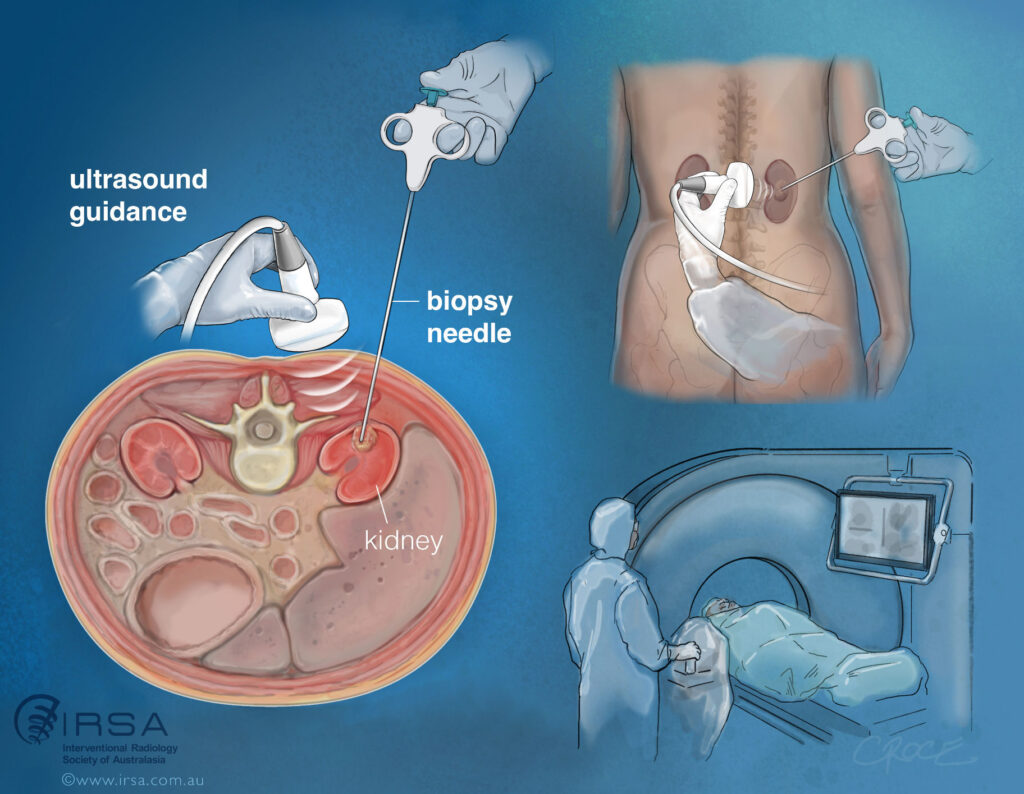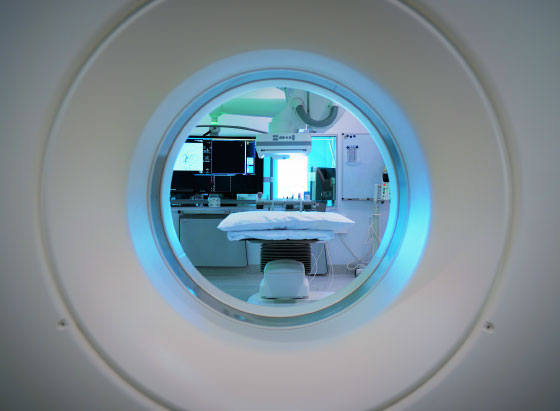WHAT IS A PERCUTANEOUS IMAGE GUIDED BIOPSY?
Percutaneous means “through the skin”.
A biopsy is a method of using a special needle to take a small piece of tissue from inside the body for analysis in the laboratory, normally to diagnose or exclude cancer. This could be from an organ such as the liver, kidney or from a lymph node or other area such as the lining of the abdomen (peritoneum).
The biopsy needle is advanced through a small cut in the skin overlying the area to be biopsied and image guidance is used to plan a path into the target. The sample of tissue is then sent to a laboratory for examination under the microscope.
WHY WOULD MY DOCTOR REFER ME TO HAVE THIS PROCEDURE?
The reason for requesting this test is that your referring doctor seeks an assessment of the tissue to look for any abnormality or disease that may be present. Often this is used to exclude or diagnose cancer or infection and to obtain specific information about the cells involved.

Wondering If You Qualify for PERCUTANEOUS IMAGE GUIDED BIOPSY?
How do I prepare for the procedure?
You will need to have routine blood tests to assess your kidney function and clotting. You should inform the doctor if you take any medicines to thin the blood (anti-coagulants) as you may have to stop or adjust these temporarily. Examples include warfarin, apixaban and clopidogrel (Plavix). You cannot eat for 6 hours before the procedure. You will need to wear a hospital gown and be checked in before the procedure.
What happens during the procedure
You will have an initial scan to help plan the procedure, normally a CT or ultrasound scan. You will be asked to lie on a radiology table and may be offered sedation to alleviate any anxiety. It is important that you lie still throughout the procedure. The Interventional Radiologist will clean the skin with antiseptic solution and inject local anaesthetic. This will sting briefly before the tissues go numb. You will have a small cut made to your skin and the biopsy needle will be inserted to take the tissue sample.
The Interventional Radiologist will use the ultrasound machine, CT scanner or X-ray machine to accurately guide the needle into the correct position to take the biopsy. In the case of CT, the table will move in and out of the CT scanner several times. You may be given breathing instructions during the procedure. At times you may need to hold your breath for a few seconds.
The procedure takes between 20-30 minutes.

What is the recovery
normally like?
You will return to your ward and the nursing staff will regularly check your pulse and blood pressure. You may need to stay in bed for approximately 2-4 hours. Some patients may need to stay in the hospital overnight after the procedure, particularly if you have travelled a distance to attend for the biopsy, or if you stay alone. It is important that someone is able to take you home and stay with you overnight. We do not recommend driving yourself home after the biopsy.
What are the risks?
Percutaneous image guided biopsies are common procedures with overall low risk but as with any medical procedure there are serious complications that can arise. The specific risks attached to your procedure will depend on where the biopsy tissue is being taken from. Your doctor and the interventional radiologist performing the biopsy will discuss these with you.
Generally, there is a risk of bleeding because of any biopsy. This would normally cause bruising but sometimes bleeding can be more severe, and this may need a procedure to control it. This would also be carried out in the Radiology Department. Rarely, surgery may be required. If there was a large amount of blood loss, you may require a blood transfusion.
Other complication risks relate to issues with the organ being biopsied which might include fluid leak or dysfunction. Additionally, there is a small risk of harm to adjacent organs which may be along the needle path though imaging guidance does reduce this risk substantially.
Serious complications, including need for major surgery or death, are quite rare.
What are the benefits?
Image guided biopsy maximises the chances of obtaining a good sample of organ tissue to answer your doctor’s questions about potential abnormality or disease. Image guidance also reduces (but does not eliminate) the risks of complications.
How long does it take to get the results from my procedure?
Your referring doctor will receive a report on the biopsy normally within a couple of days of the procedure then a formal laboratory report approximately five days after the procedure.
Find a Doctor
Our Doctor Finder is a comprehensive database of interventional radiologists practicing in Australasia.
Use the search fields to search based on geographic location or by area of practice.
